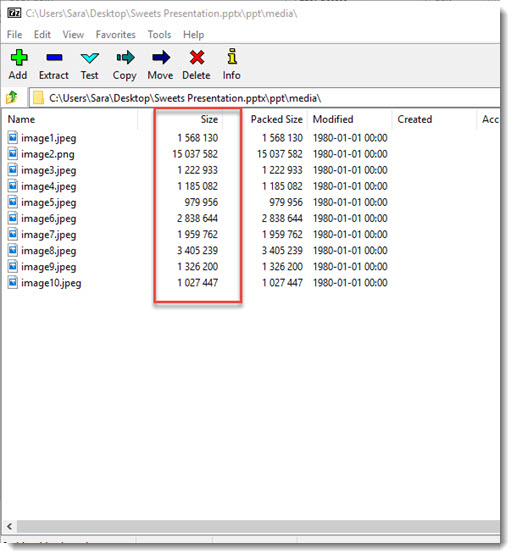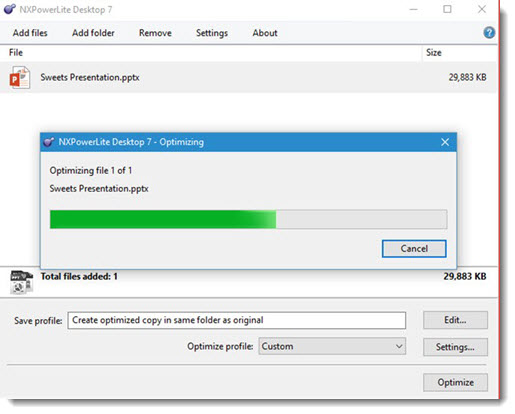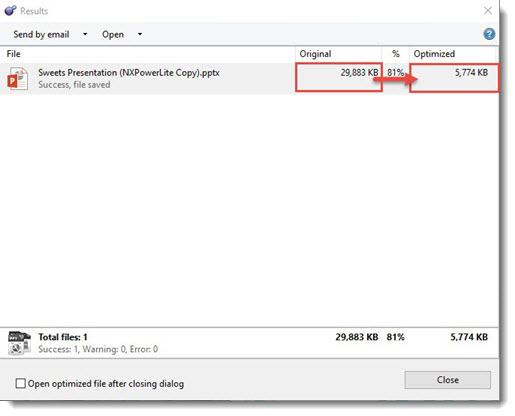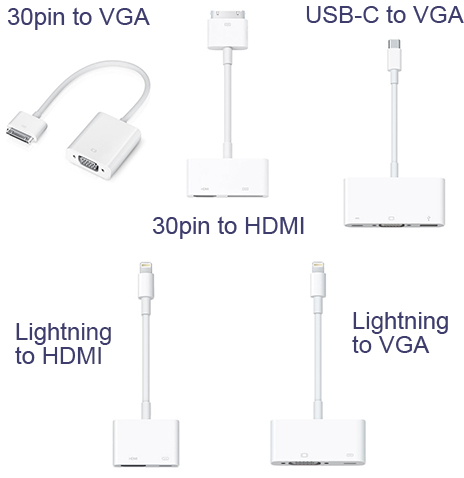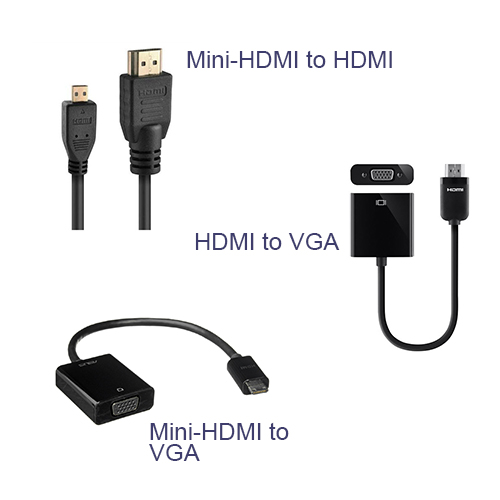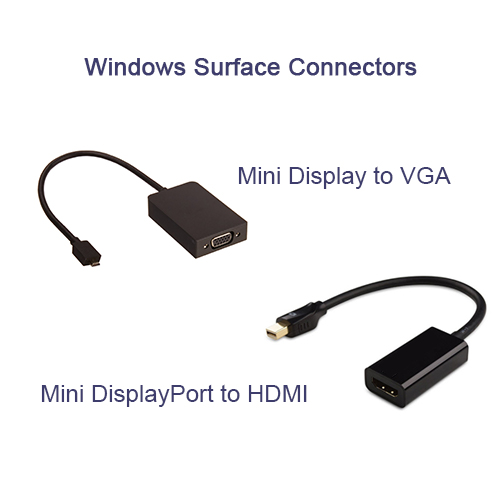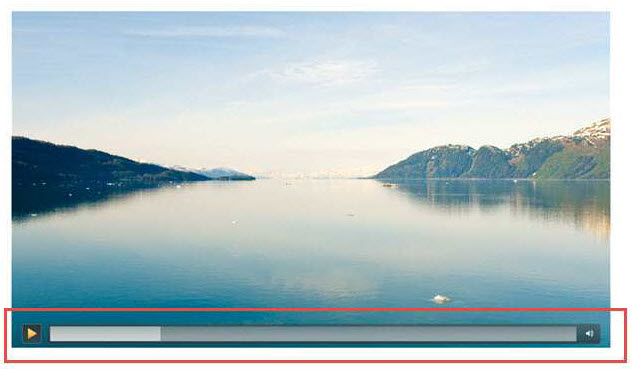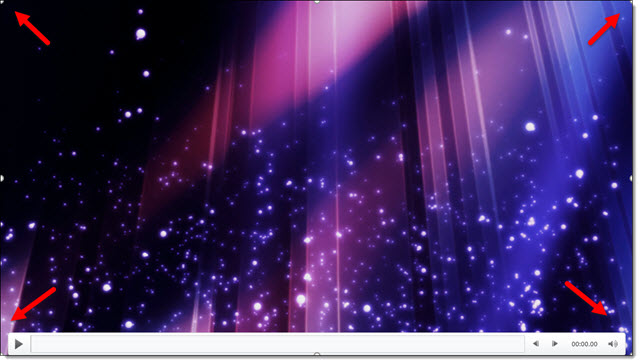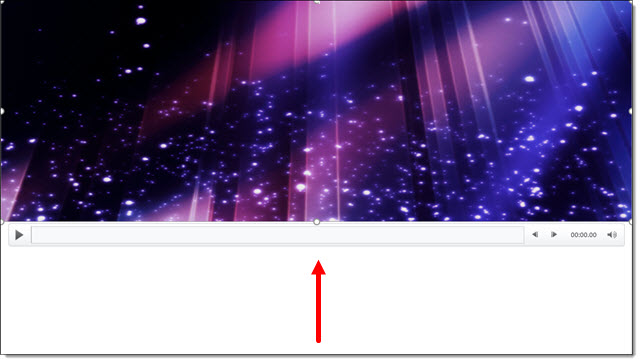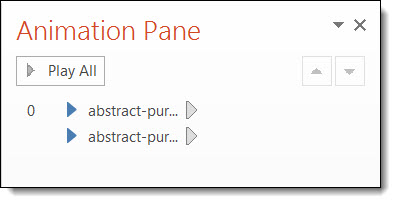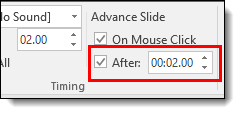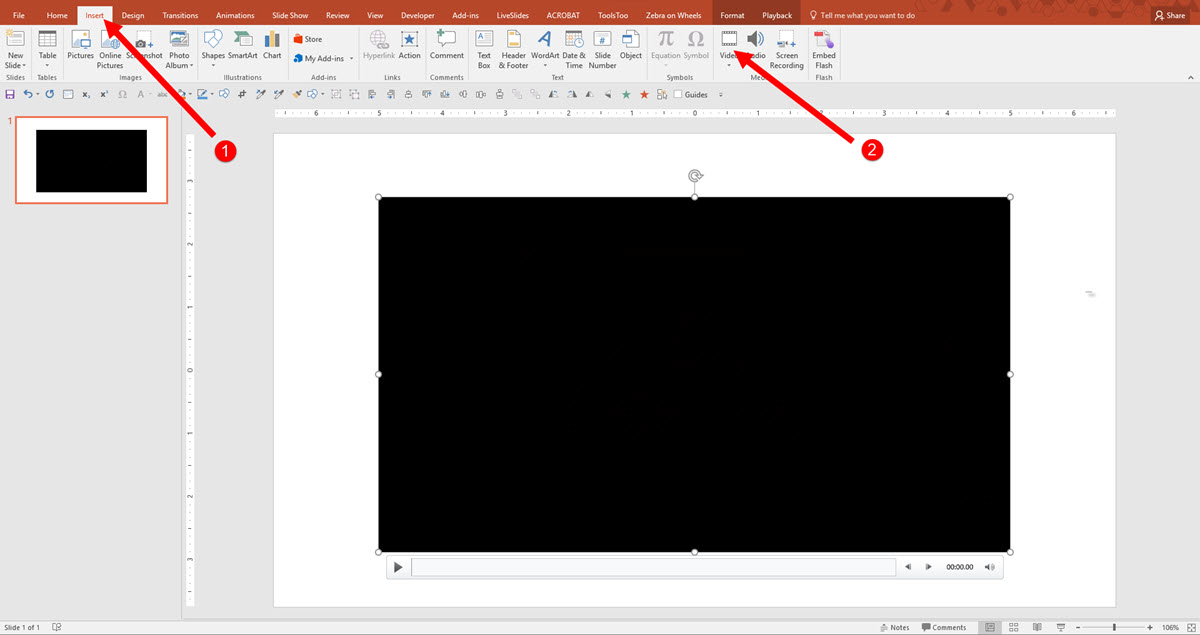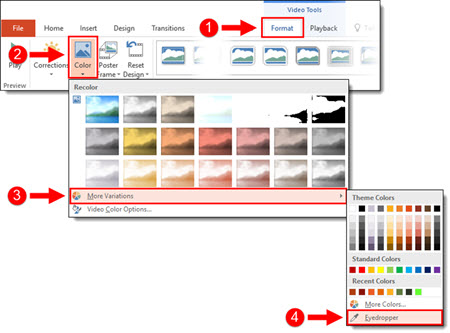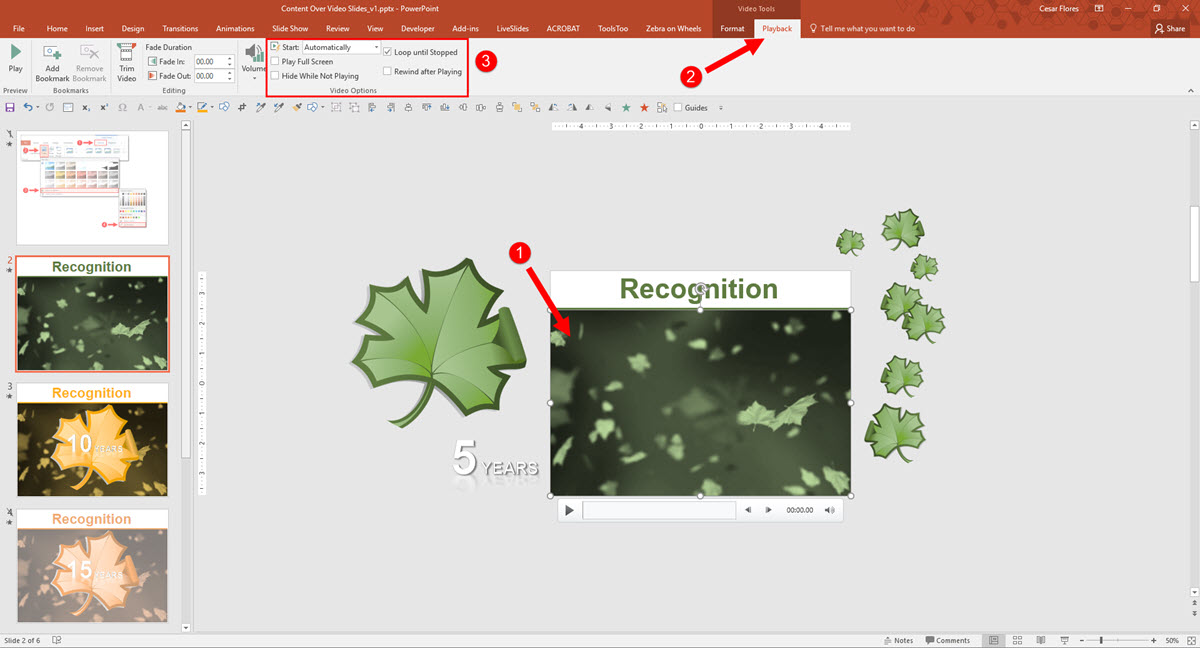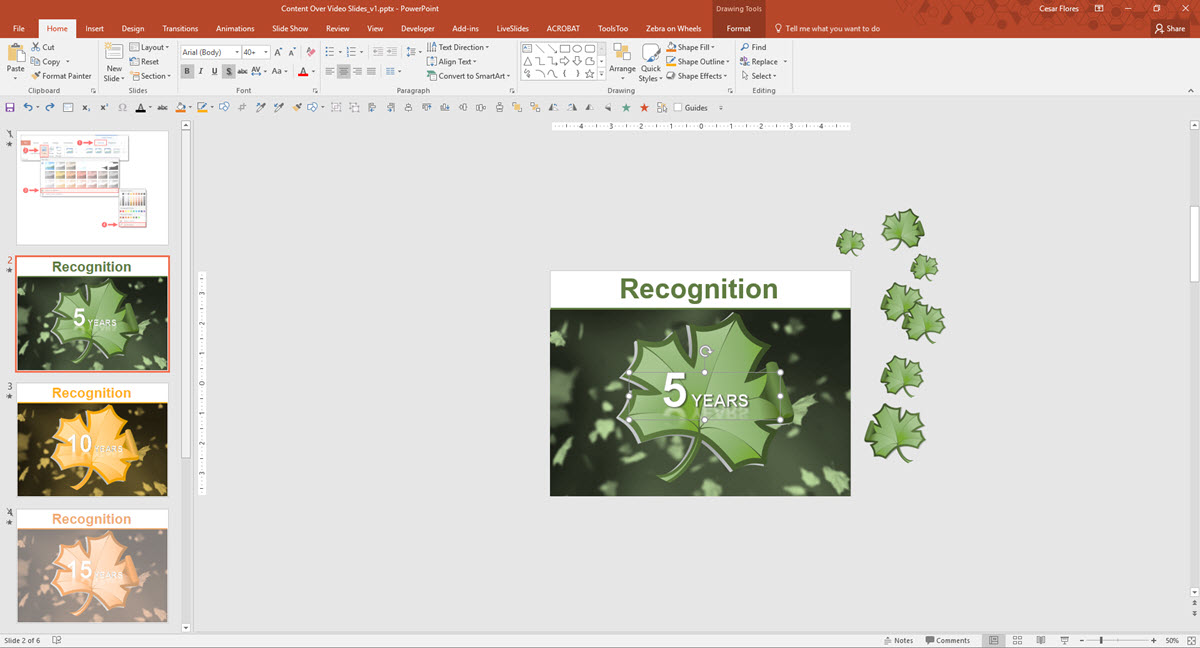NXPowerLite PowerPoint Add-in
PowerPoint file size too big? Sometimes that’s okay if it has embedded videos, or just has a lot of slides. But if your 11 slide presentation has no videos and is 30+ MB, it is time for some file optimization. PowerPoint has built in tools to optimize images and multimedia – and they continue to improve. But for image optimization, I prefer to use one of the 3rd party add-in options, the NXPowerLite PowerPoint Add-in.
For TLC Creative Services, we have NXPowerlite installed on all computers and use as needed. As stated on their site, what this add-in does is, “Shrink Your Files.” I’ve put together a quick explanation of how we use this at TLC.
NXPowerLite
In this example, we’ve added a HiRes image to a PowerPoint Presentation. Our simple 10 slide presentation is a 29.1 MB file.
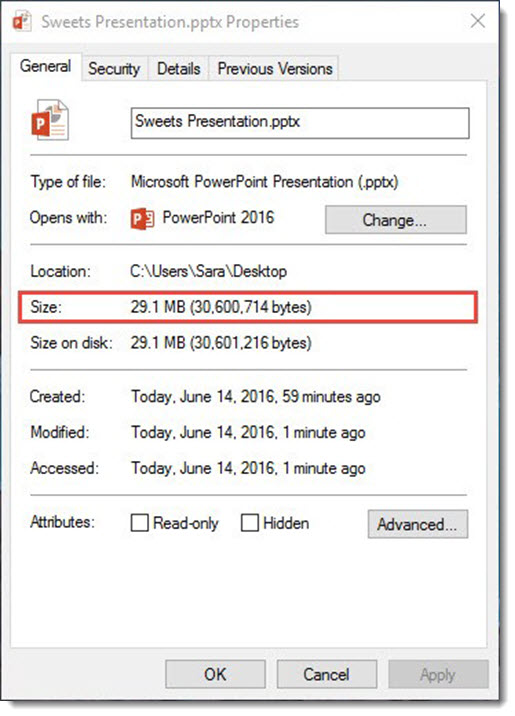
The images within the presentation are 15MB, because they are far larger than HD projection, most are “print” quality resolution. By using the NXPowerLite PowerPoint Add-in, we can optimize these images in order to reduce file size.
Step 1: Save your presentation.
Step 2: Go to the ADD-INS tab > OPTIMIZE WITH NXPOWERLITE

Step 3: Select YES at this pop up dialog (unless you do not want to save over this file because you did not do Step 1 yet, then cancel, save the presentation and come back to this step when you can select YES).
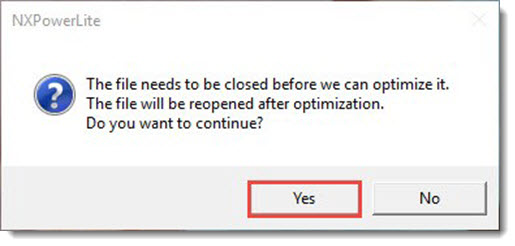
Step 4: Custom the NXPowerLite SETTINGS.
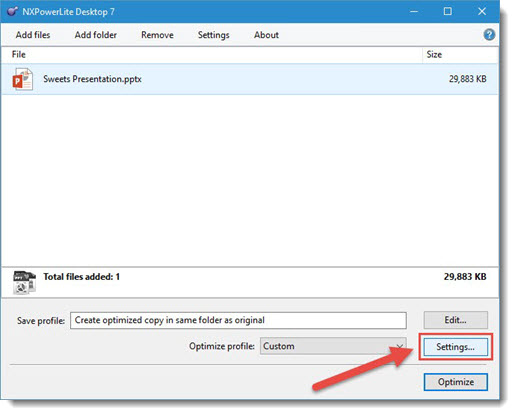
Step 5: This should be a one-time process as NXPowerlite will remember your custom settings.
- JPEG quality =9 on all three options
- Resize Images For Display At = 1920×1080 on all three options
- delete Cropped Areas in Pictures = NOT checked
- Flatten Embedded Objects = NOT checked
- Click OK to save these settings and close the Settings dialog box
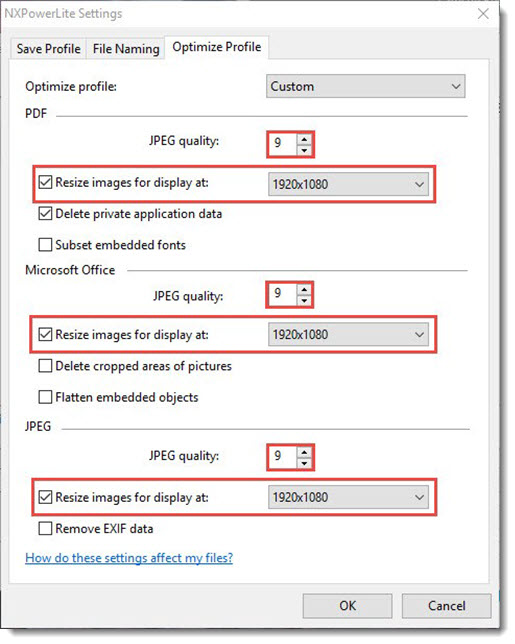
File Naming
Before we Optimize the file click on the File Naming tab. Here you can customized the text prior to Optimizing the file.
1) File Naming Tab
2) You can add custom text that will be added to your Original file name
3) The custom name will be added AFTER your file name
4) The custom name will be added BEFORE your file name
Here’s an example of the Outputted files
1) Backup of the original File name with the Custom Text BEFORE
2) Backup of the original File name with the Custom Text AFTER
3) Optimized file gets outputted with Original File Name
Back in the NXPowerLite dialogue, confirm the presentation is selected and click OPTIMIZE.
When NXPowerlite is finished, it displays the original and the optimized file size. In your project folder will be both the original (name now appended) and the new optimized version.
Looking at the new optimized file, all of the images have been adjusted to HD (1920×1080 display resolution) and are approximately 6 MB (with no visible quality loss for the slide show)!
From the entire TLC team, thank you to the NXPowerLite PowerPoint add-in for making our jobs a bit easier and quicker!
– Troy @ TLC

